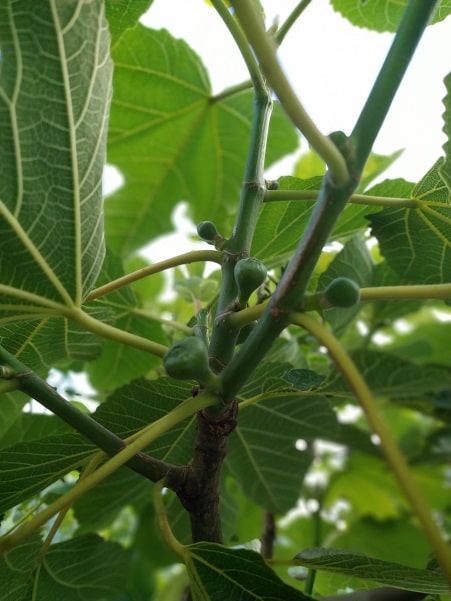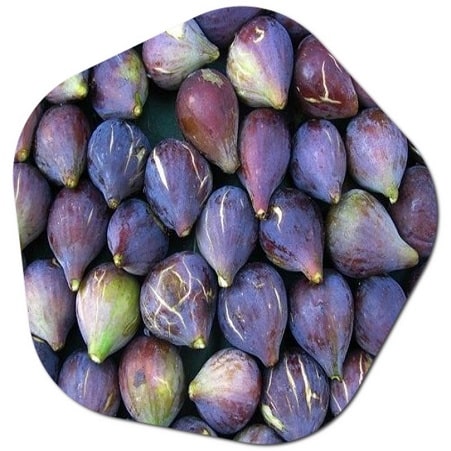Fig trees grow in France. Information about growing fig trees in France and fig trees in France is in our article. Figs (Ficus carica) are popular in France. Figs have a long history in French cuisine and are highly regarded for their sweet and luscious flavor. France has a climate that is conducive to growing fig trees, particularly in the southern regions where the climate is warmer and more Mediterranean.
In France, fresh figs are commonly enjoyed as a dessert fruit or used in various culinary preparations. They can be eaten fresh on their own, added to salads, used in tarts and pastries, or incorporated into savory dishes alongside cheeses, cured meats, or roasted vegetables. Figs are also used to make preserves, jams, and compotes.
The popularity of figs in France is reflected in their presence at local markets, where you can find a variety of fig cultivars, including both green and purple-skinned varieties. Additionally, many households and restaurants in France have fig trees in their gardens, allowing them to enjoy fresh figs during the harvesting season.
The French appreciate figs not only for their taste but also for their cultural significance. Figs are often associated with the Mediterranean lifestyle and are an integral part of traditional Provençal and Mediterranean cuisines. Their presence in French cuisine adds a touch of sweetness and elegance to many dishes.
So, if you visit France, you are likely to find figs prominently featured in markets, restaurants, and local recipes, especially during the fig season in late summer and early autumn.
Are figs in season in France?
Yes, figs are in season in France during the late summer and early autumn months. The exact timing of the fig season can vary slightly depending on the region and specific climate conditions each year. Generally, figs begin to ripen in France from August and can continue through September and sometimes into early October.

During the fig season, you can find a wide variety of fresh figs available at local markets, grocery stores, and even roadside stalls in the regions where they are cultivated. Figs come in different colors, including green, purple, and black, with each variety having its own unique flavor profile.
The peak season for figs in France is typically in September when you can find an abundance of fresh and ripe figs. This is the best time to enjoy the fullest flavors and sweetness of the fruit. Figs that are picked and consumed when fully ripe are exceptionally delicious and have a soft, honey-like sweetness.
If you are in France during the fig season, you can explore local markets and look for fresh figs to enjoy as a standalone fruit or incorporate them into various recipes. They can be used in salads, desserts, preserves, or enjoyed simply with cheese and cured meats for a classic Mediterranean-style treat.
Keep in mind that figs are a perishable fruit, so it’s best to consume them within a few days of purchase for the best flavor and quality.
Which figs are best from France?
France is known for producing several delicious varieties of figs. Here are a few notable fig varieties that are highly regarded in France:
- Black Mission: Black Mission figs are one of the most popular fig varieties in France. They have a dark purple to black skin and a rich, sweet flavor. These figs are often used in desserts, jams, and preserves.
- Brown Turkey: Brown Turkey figs are another common variety found in France. They have a brownish-purple skin and a slightly milder flavor compared to Black Mission figs. They are versatile and can be enjoyed fresh or used in various culinary preparations.
- White Marseille: White Marseille figs, also known as White Marseillaise or White Marseilles, are highly prized in France. They have a pale greenish-yellow skin and a sweet, honey-like flavor. These figs are particularly popular for eating fresh or in salads.
- Violette de Bordeaux: Violette de Bordeaux figs are small-sized figs with a dark purple skin. They have a deep, complex flavor and are often described as having a berry-like taste. These figs are highly sought after for their sweetness and unique profile.
- Rouge de Bordeaux: Rouge de Bordeaux figs, also known as Bordeaux or Bordeaux Black figs, have a reddish-purple skin and a sweet flavor. They are typically larger in size compared to other fig varieties. These figs are often enjoyed fresh or used in baking and desserts.
These are just a few examples of the many fig varieties that are cultivated in France. Each variety has its own distinct characteristics, flavor profiles, and preferred culinary uses. The best fig variety can vary depending on personal preference, and it’s worth exploring different varieties to find your favorite.
When in France, you can visit local markets, specialty food stores, or orchards to find a wide selection of fresh figs and discover the unique flavors and qualities of each variety.
What is a French fig?
The term “French fig” does not refer to a specific variety of fig but rather indicates figs that are grown in France. France has a long history of fig cultivation, and several different fig varieties are grown in different regions of the country. These varieties can include both common fig cultivars found worldwide, as well as local or regional fig varieties that are specific to certain areas of France.

As mentioned earlier, some well-known fig varieties grown in France include Black Mission, Brown Turkey, White Marseille, Violette de Bordeaux, and Rouge de Bordeaux. These varieties, among others, are cultivated in various regions of France and contribute to the diverse range of figs available in the country.
French figs are highly regarded for their flavor, sweetness, and quality. They are often enjoyed fresh as a standalone fruit, used in desserts, jams, and preserves, or incorporated into savory dishes and salads. The Mediterranean climate in certain regions of France, particularly in the south, provides favorable conditions for fig cultivation and contributes to the production of high-quality figs.
When you come across figs labeled as “French figs,” it generally indicates that they are figs that have been grown in France, and they may encompass various varieties depending on the specific region and the grower. It’s always a delightful experience to try different varieties of French figs and savor the unique flavors and characteristics they offer.
How to prune a fig tree in France?
Pruning fig trees in France follows similar principles to pruning fig trees in other regions. Here are some guidelines for pruning fig trees in France:
- Timing: Fig trees in France are typically pruned during late winter or early spring, before new growth begins. Pruning during this dormant period allows the tree to heal quickly and minimizes the risk of disease transmission.
- Structural Pruning: The primary objective of pruning fig trees is to maintain a balanced and open structure. Remove any dead, damaged, or diseased branches. Also, eliminate any crossing or rubbing branches that can hinder airflow and create potential points of disease entry.
- Size Control: Fig trees can become quite large if left unpruned. Prune back the previous year’s growth to control the size and maintain a manageable tree. Pruning can be done selectively to promote branching and keep the overall size in check.
- Fruiting Wood: Fig trees bear fruit on the previous year’s wood. To encourage fruit production, retain a good balance of older, fruiting wood while promoting the growth of new shoots. Remove excess wood to ensure adequate light penetration and airflow to the interior of the tree.
- Pruning Cuts: When making pruning cuts, use clean, sharp pruning shears or loppers. Make cuts just above a bud or lateral branch junction. Avoid leaving stubs, as they can attract pests and diseases.
- Espalier Training: In some cases, fig trees in France are trained against walls or fences in an espalier style. Prune and train the branches to create a structured framework, spreading them out evenly along the support.
- Aftercare: After pruning, apply a thin layer of organic mulch around the base of the tree to conserve moisture and suppress weed growth. Monitor the tree for any signs of disease or pests and take appropriate measures if necessary.
It’s important to note that the exact pruning techniques and timing may vary depending on the specific fig variety, local climate, and the desired shape and size of the tree. It can be helpful to consult with local gardeners, horticultural experts, or agricultural extension services in your specific region of France for guidance tailored to the local conditions and fig varieties commonly grown in your area. How big does a fig tree grow in France? >>
